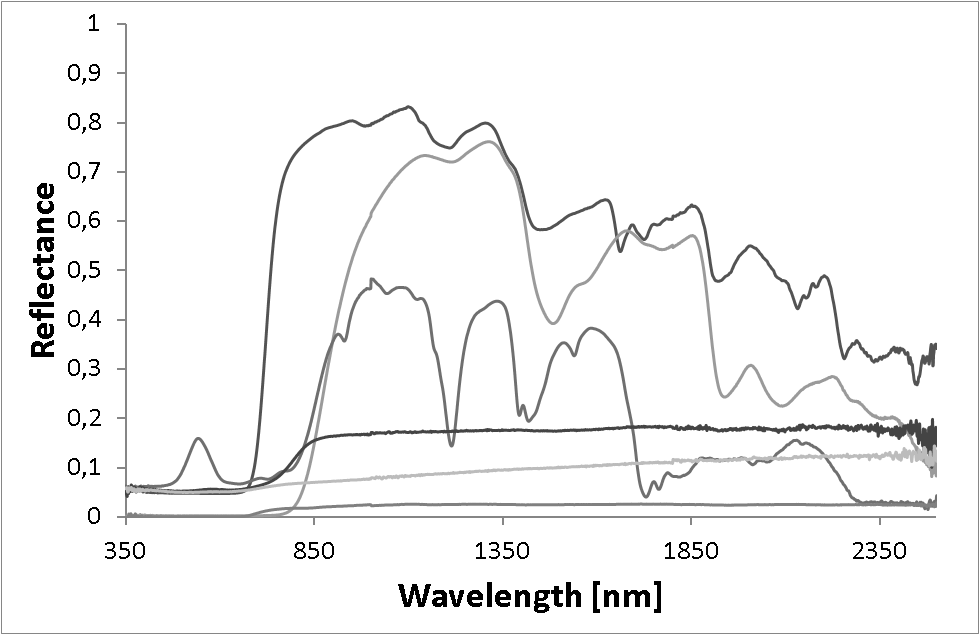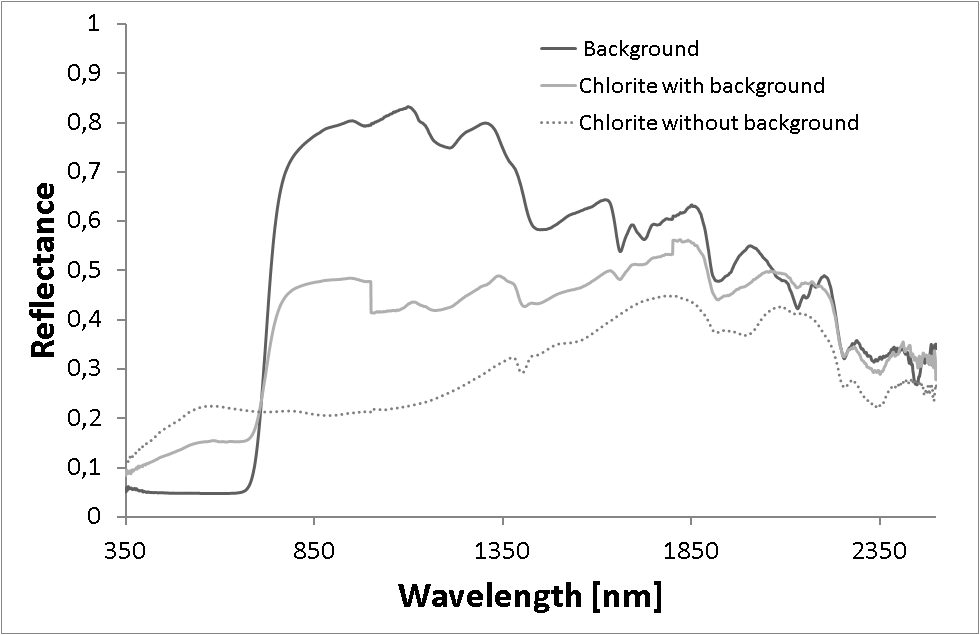Scientific background
Scientific research has been conducted to compare spectrometer users’ methods. Their results show (Fig. 1) that, unfortunately, not all spectrometer users are aware of the reflective background’s affect on primary target signals [1]. Figure 1 illustrates six background spectra showing the effects of unsuitable set-up materials in a scientific project. An ideal background curve is a near-zero baseline without any peaks or artifacts.

Characteristics of 6 different background signals [1]
Thus, it is highly important to consider the interaction between the background material and the object being measured. For instance, measuring chlorite on different background materials [1] shows differences on the reflectance spectrum (Fig. 2).

Effect of background signals on chlorite [1]
[1] Jung, A., Götze, C., Gläßer, C. 2012: Overview of Experimental Setups in Spectroscopic Laboratory Measurements – the SpecTour Project. PFG, 4, 0433-0442.